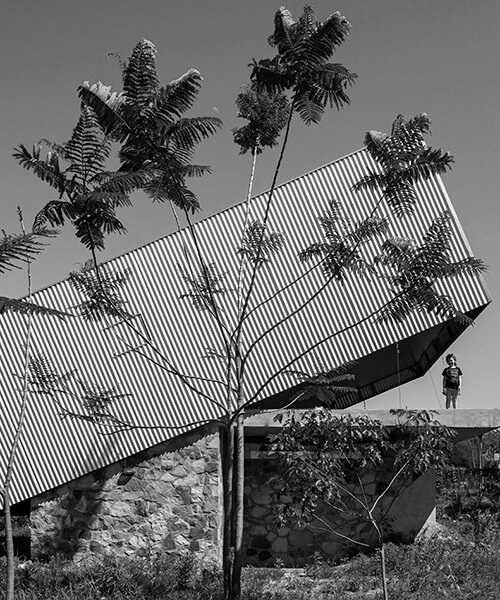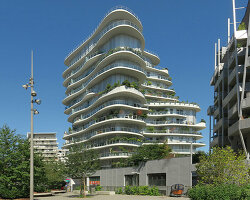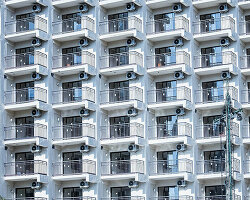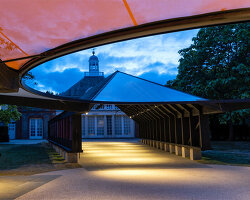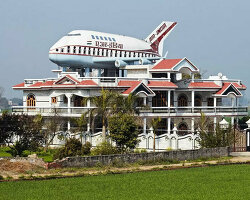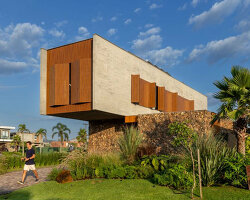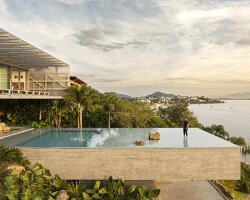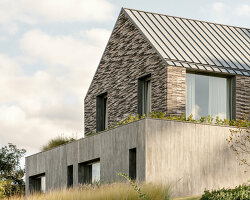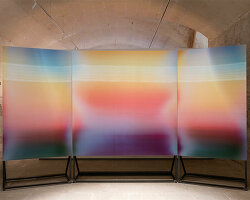brazilian photographer leonardo finotti has long celebrated the modern and contemporary architecture throughout latin america. focusing on both commissioned documentation and authorial photo series, the artist has investigated and illuminated built space. while leonardo finotti has long highlighted formal works of architecture, he has continually explored the anonymous and informal urban areas across the continent. the architectural photographer is likewise known for his long-time friendship with architect paulo mendes da rocha, who was widely celebrated for his brutalist work across brazil. leonardo finotti had documented the pritzker prize winning architect’s spaces for nearly twenty years, noting the commonly obscured boundaries between the public and private realms.
designboom spoke with leonardo finotti about his experiences and processes as an architectural photographer, along with his relationship with paulo mendes da rocha.
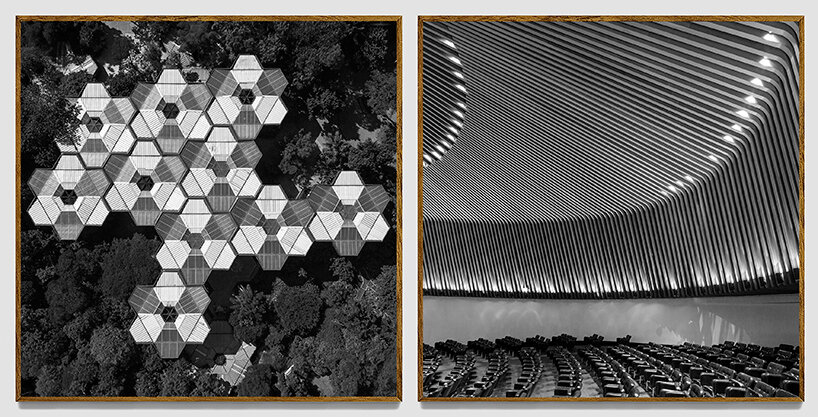
LAMA series, orquideorama (2006), plan B+JPRCR arquitectos (left)
LAMA series, sala de conciertos (1966), esguerra saenz, urdaneta, samper (right)
designboom (DB): can you please start by telling us a little about your background and how you became involved in architectural photography?
leonardo finotti (LF): I never dreamed to be a photographer, all happened very spontaneously while studying architecture in my home town uberlândia where I met to the professor thomaz harrell. I think his dedication and passion for photography was somehow contagious. during my studies and close relation with him, we created many projects together building a strong understanding of the discipline together with my interest on architecture and traveling.
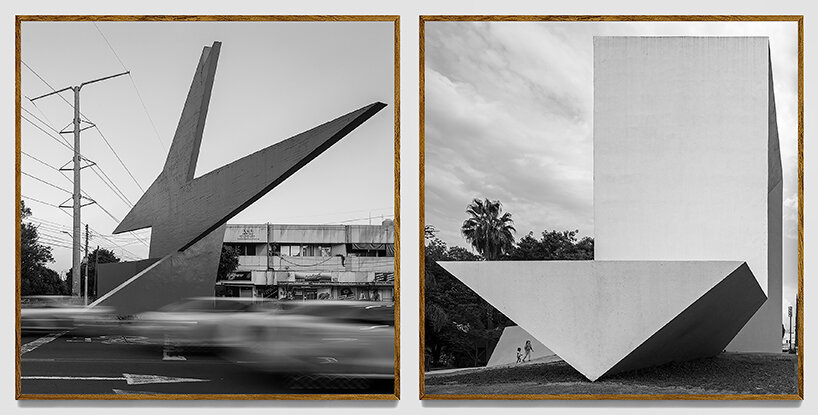
LAMA series, pájaro de fuego (1957), mathias goeritz (left)
LAMA series, escultura la gran puerta (1972), fernando gonzález gortázar (right)
DB: generally speaking, is there a particular message or sense that you want your images to convey?
LF: photography for me was a tool to start paying attention in the urban environment and myself. somehow is very lonely in the way that you literally need to focus so no matter if you are surrounded for many people or in the middle of nowhere. it seems that you are meditating in a market or a temple, then you start creating your own strategies to deal with light, space and all noises that exist specially in latin-american cities where I have a close interest.
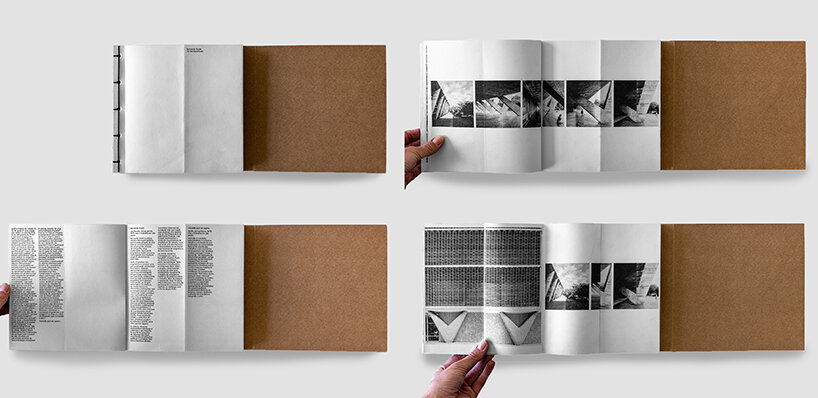
artist book, limited edition of 230, leonardo finotti: rio reenquadrado (left, right)
DB: how do you prepare in advance of a shoot? and what is the first thing you do when you arrive on site?
LF: I work in a very uncomplicated way usually dedicating at least one entire day for a building. I leave the preparation to the architect but I can also give some inputs during the shooting. with time I realise that always will happen some kind of issues and I learned to face them very smooth and even trying to turn that on a positive aspect. somehow I accomplish a domestication of the light that points me the rhythm of shooting and directions. in another hand I dedicate a lot to my artist career especially with invitations for exhibitions and photo books.
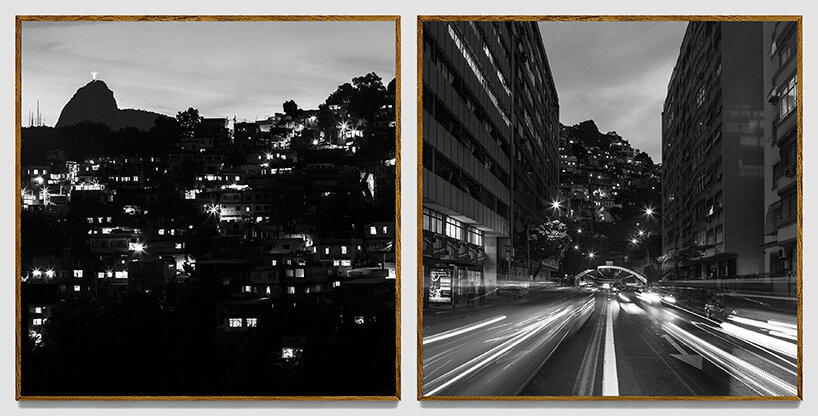
series rio enquadrado#80, (2012) favelas morro do chapéu e babilonia (left)
series rio enquadrado#79, (2012) morro do cantagalo (right)
DB: how much work takes place after a shoot, before the images are ready to publish?
LF: I am very conservative in terms of post-production and most of time you can hardly notice the difference. what is more complicated is the balance color temperature with different lights and my work is very difficult to crop because the edges are very important to structure the photos. my artist work is based on revisiting the modern architecture specially in latin america and an investigation of anonymous and informal urban spaces. I have a series called rio enquadrado that is basically to reframe my own work in black & white and square. so those experimentation usually keeps my archive more lively and l like to go back to places that I liked most.
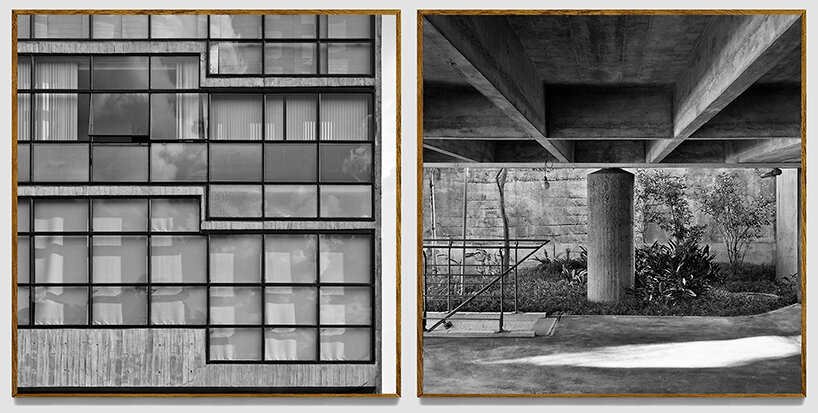
series habitar mendes da rocha#44.35, (2012), edifício jaraguá, são paulo (left)
series habitar mendes da rocha#41.59, (2011), casa masetti, são paulo (right)
DB: you have extensively documented the work of paulo mendes da rocha. what do you find so special about his work?
LF: paulo always been very generous to me, once I got a call for his office asking me to go get a paulistano chair he had for me. I proposed the 2G magazine of his work six months before he won the pritzker prize and definitely photographing almost all of his buildings for almost 20 years was very important to the audience understand the value of his work. I believe that architects like mendes da rocha it goes beyond his architecture but his engagement, agenda and principles to the collectiveness.
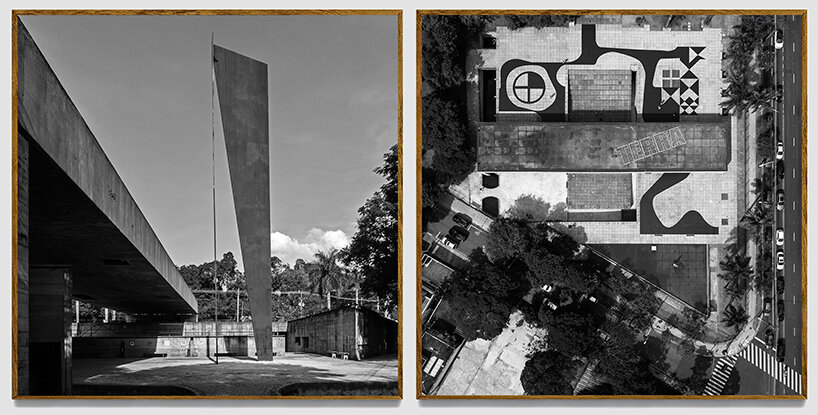
series collection of museums#16.158, (2021), amilcar de castro@mube, são paulo (left)
series collection of museums#16.119, (2018), burle marx@mube, são paulo (right)
DB: did you find that his personality was reflected in his buildings?
LF: definitely yes but what I liked most was to meet him frequently walking in the city simply having a coffee or having a cinnamon pie in the cafe close by his office. his architecture are made to have no boundaries between public and private but unfortunately many of his clients were not prepared for those invisible limits that sensitive people are able to see and share. this accessibility to the city or his on studio where you could easily sit and chat for hours is what will stay even if he is not between us anymore.
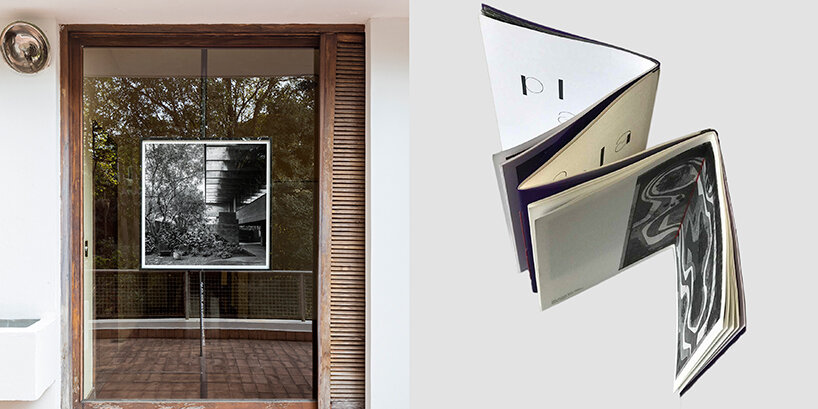
leonardo finotti: sotaques paulistanos da bauhaus, exhibition@casa modernista, são paulo (left)
artist book, limited edition of 200, leonardo finotti: sotaques paulistanos da bauhaus (right)
DB: do you have a favorite project by paulo mendes da rocha that you have photographed? why does this one stand out?
LF: in my opinion his houses are very important part of his work besides he was most interested in public projects. I believe his house in butantã is one of the residential masterpieces, few architects in the world had designed five seminal houses like paulo, le corbusier, neutra, who else? most of the people live in houses or apartments and can not be considered a minor subject compared to public buildings but the opportunity of social change together with urbanism made for the pedestrian and localities. I believe this could be one of his lessons.
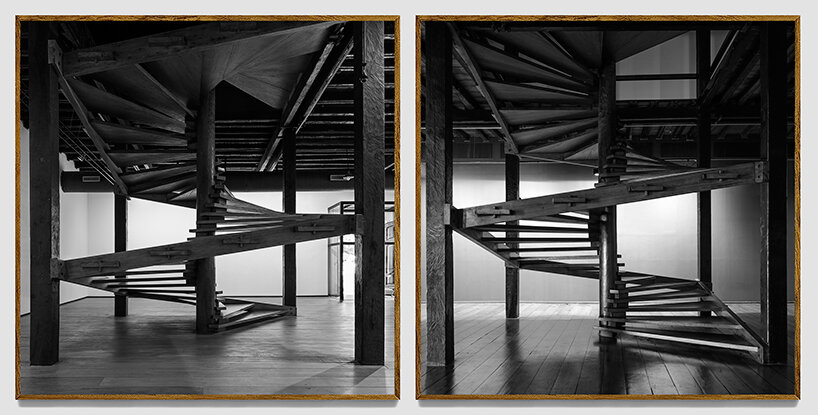
brutiful series (diptych), stairs#01, 2012 | stairs#02, 2017 | mam-ba (1959), salvador, lina bo bardi (left, right)
DB: what are you currently interested in and how is it influencing your work?
LF: my interest is helping creating a visual memory specially on latin america. besides my commissioned work framing contemporary architecture that inevitably will become a document in the future, there are many interesting subjects left behind mainly modernism and the informal city. the informality is a key instrument for a better city, not only because its potential for change but to empower the people, learn from them and develop intelligent tools. we have to find our own strategy because latin america is different and we are more social and our cities and landscape can be more sustainable than places that are already completely artificial landscapes.
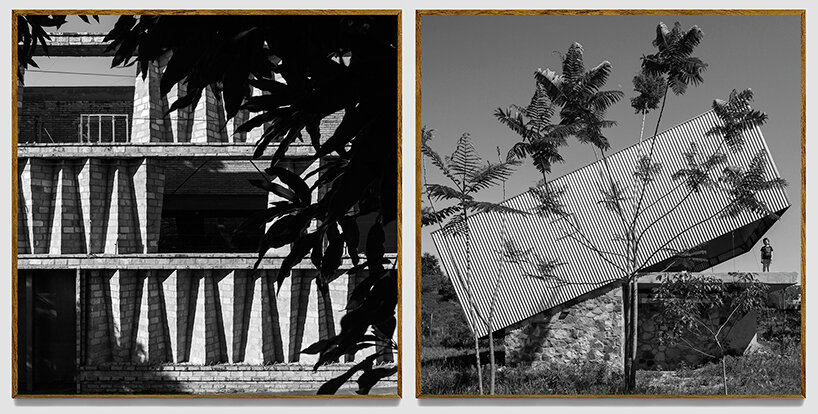
series experimental paraguay#273.17, 2009, gabinete de arquitectura, casa esmeraldina (left)
series experimental paraguay#274.07, 2013, laboratorio de arquitectura, caja obscura (right)
DB: what advice would you give to today’s young and aspiring photographers?
LF: in the smart phone era to make images is inevitable and the quality is incredible. so I think the question is not about the capacity of doing beautiful images anymore but what is the personality of your work. the algorithm is not already capable to create identity, my advice to an aspiring photographer is the capability to invent unique projects or to build your own vision. so copying a photographer’s style can only make you access to different markets but not building a solid career. to have your own visual narrative depends on your repertory based on your cultural experiences not only searching on internet, so go on the field and exercise you eyes!!!
architectural photography (324)
architecture in brazil (351)
photography (389)
PRODUCT LIBRARY
a diverse digital database that acts as a valuable guide in gaining insight and information about a product directly from the manufacturer, and serves as a rich reference point in developing a project or scheme.
